Disclosure: Meeple Mountain received a free copy of this product in exchange for an honest, unbiased review. This review is not intended to be an endorsement.
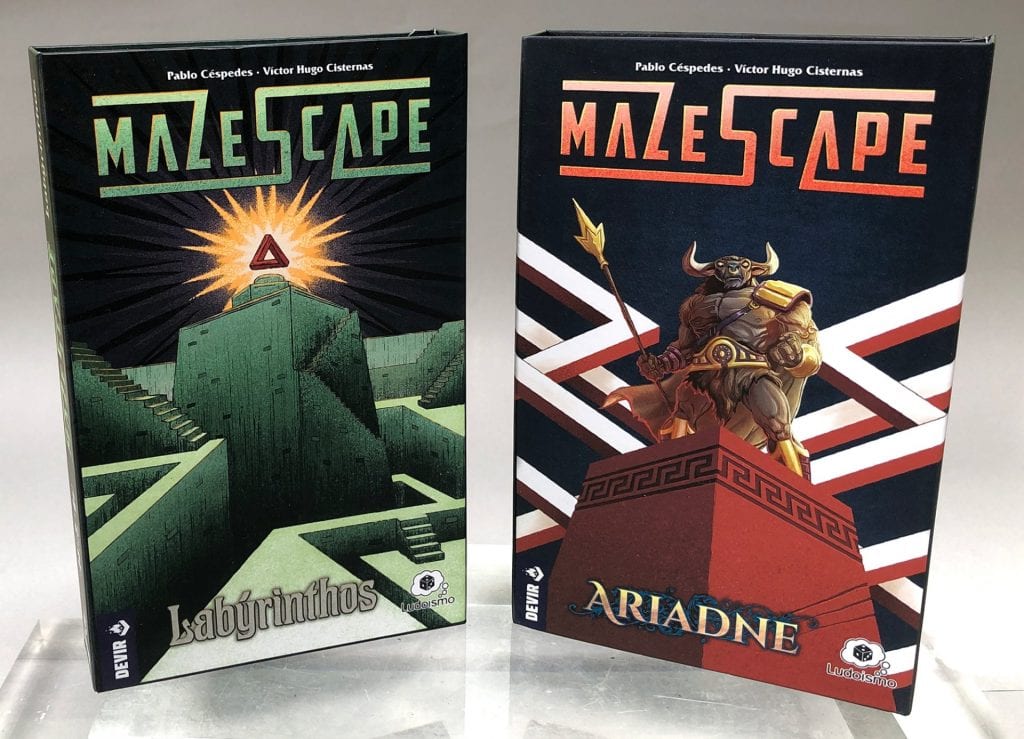
Most of my reviews here at Meeple Mountain have started with a pithy, vaguely humorous introduction that leads into a quick overview of the game and states the end goal. This review has caused me some problems over the past few weeks over one specific part of that idea.
Allow me to explain:
In each Mazescape box, (Labyrinthos and Ariadne) you will find seven, well-folded pieces of double-sided, illustrated 14 1/4” x 11 3/4” paper. Each sheet has been helpfully folded down to a 3 1/2” x 5 7/8” gateway.
The Mazes
Open the first group of pages at the natural fold, as if opening a book. The starting area, with a Compass Rose, is on the left-hand side. In most cases, the Impossible Triangle—or your end goal—is on the right.
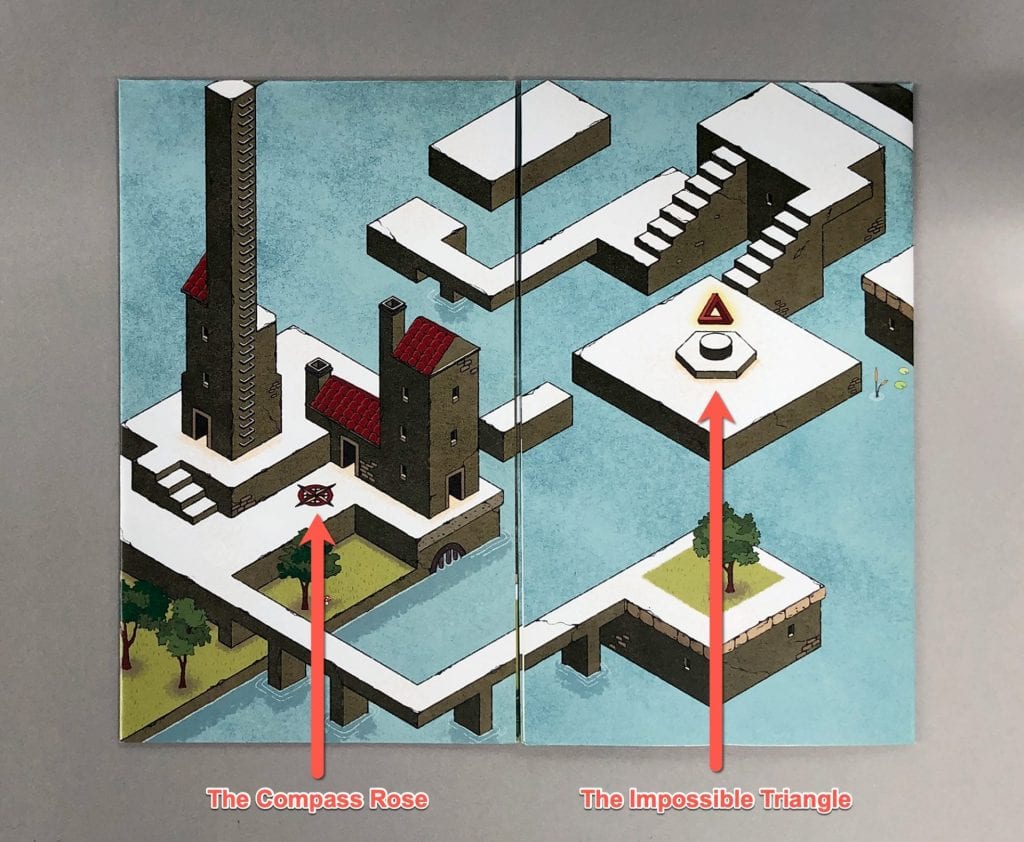
From there, as with any maze, you need to trace a contiguous path from start to finish. However, here you’ll be tracing that route through a landscape set within many different planes (or sides of the paper). To navigate through these dimension-shifting pathways, you’ll need to fold, refold, unfold, fold back, re-fold, and re-re-refold again to discover where the varying pathways lead.
Allow me to demonstrate:
Continuing with the map above (Mazescape Labyrinthos #3—fear not, no spoilers!) we’ll open the right side of the map.
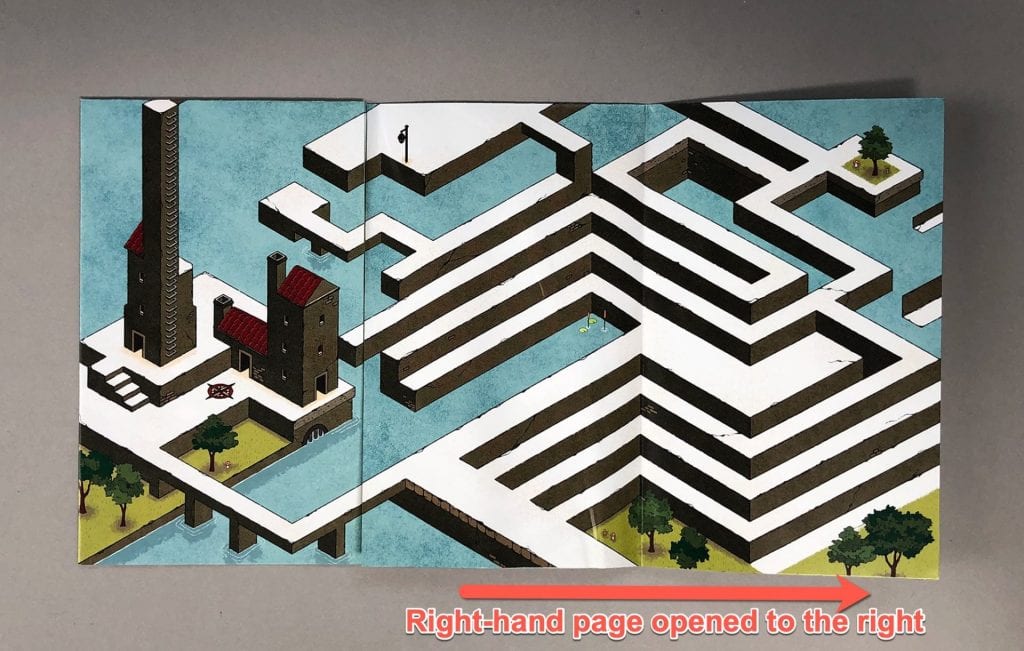
Folding the right-hand page out to the right exposes several new pathways, but none of them are very helpful. Let’s open the left-hand side of the page and see if that helps.
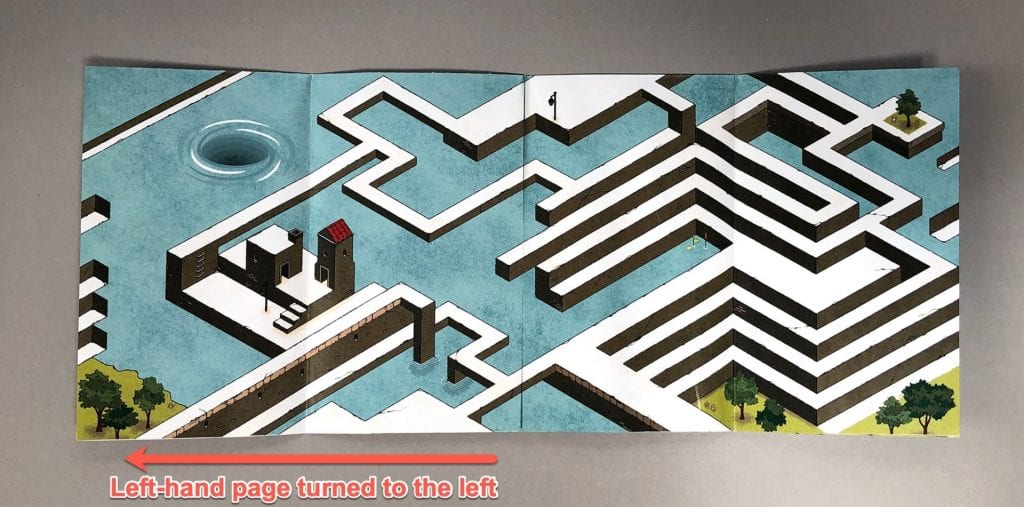
If we move back to the platform just to the left of the center fold we can unfold the right side upwards…
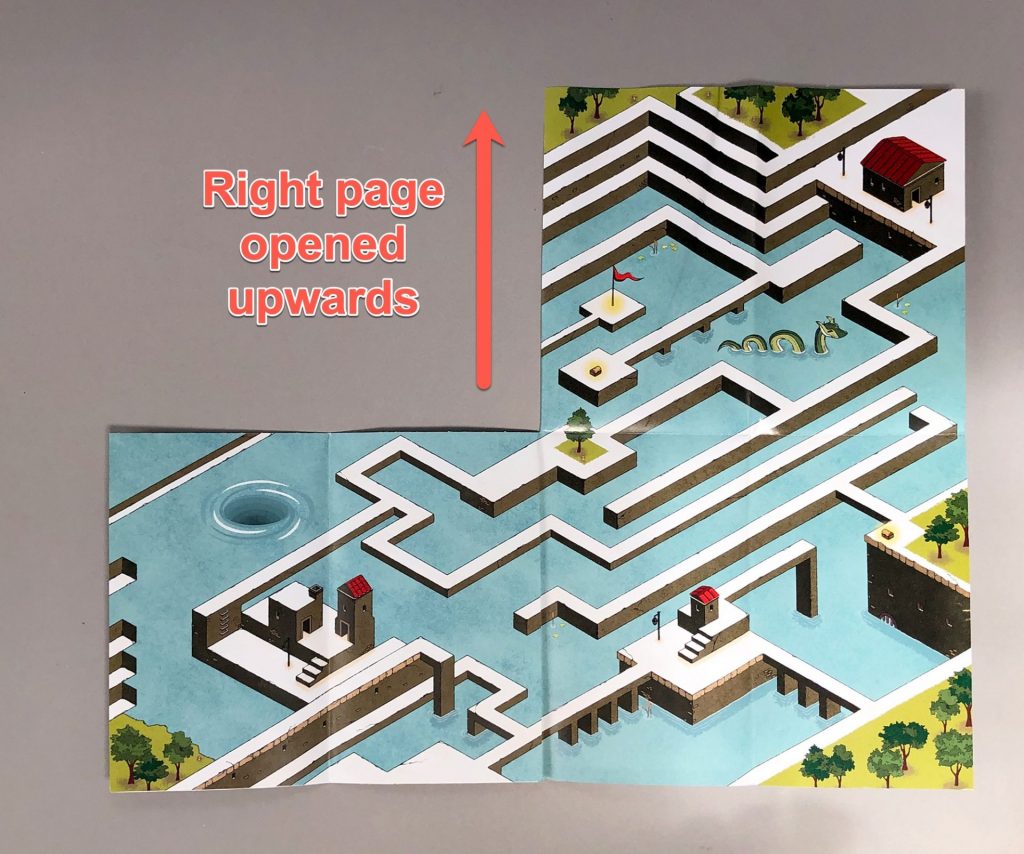
…which, unfortunately, only exposes another dead-end platform.
However, if we fold half of the right side over to the left…
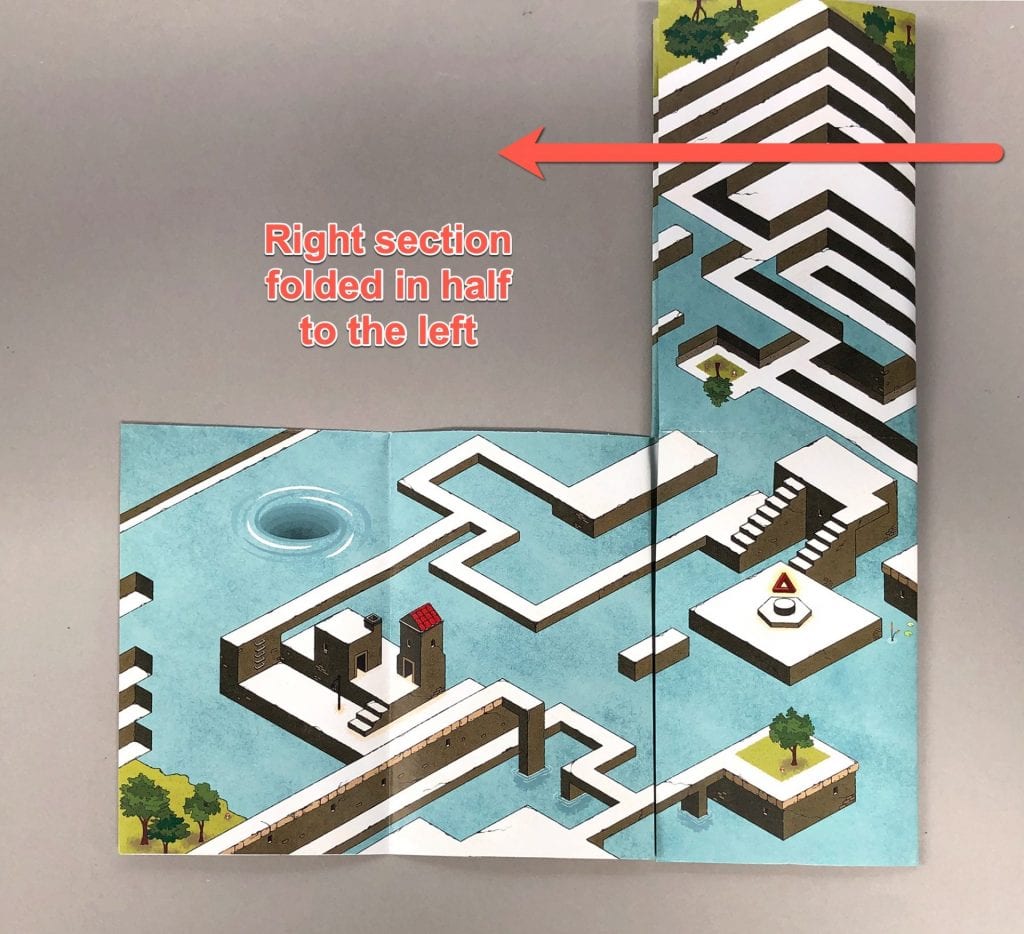
…we can at least get a glimpse of the Impossible Triangle again.
As you unfold and refold the maps you’ll get a sense of just how complex these mazes are—and how difficult it is to make your way through them.
For an added challenge, on the back of each maze is a list of other items you can search for as you’re making your way through the passages. Multiple treasure chests, lampposts, urns, and statues provide for small victories along the way.
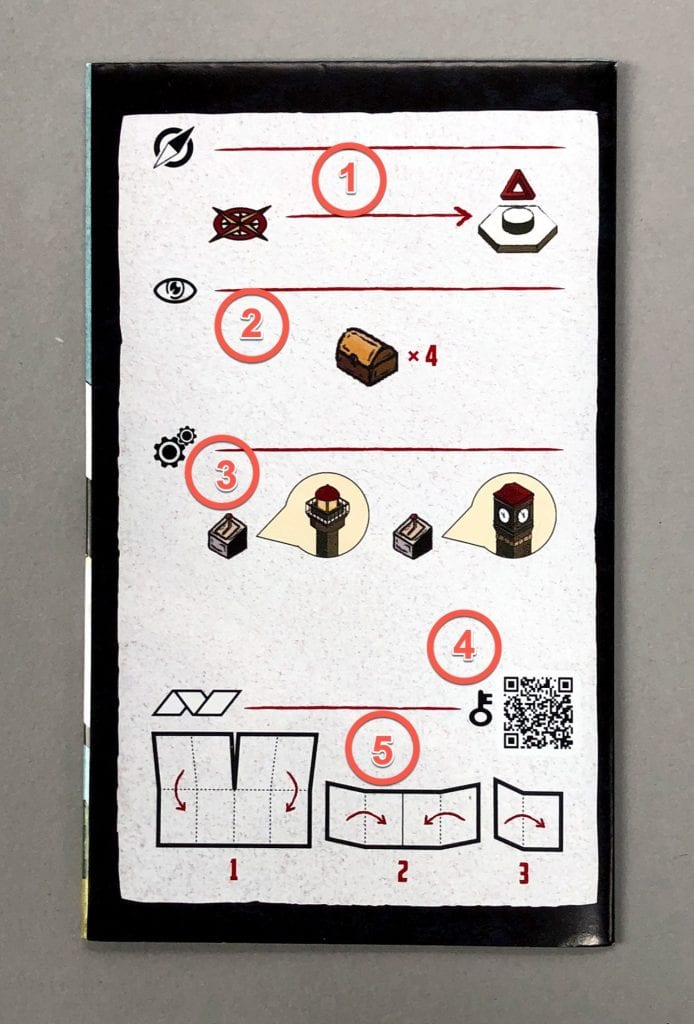
Some have locked gates that require you to first find the matching color/design key before you can unlock them.
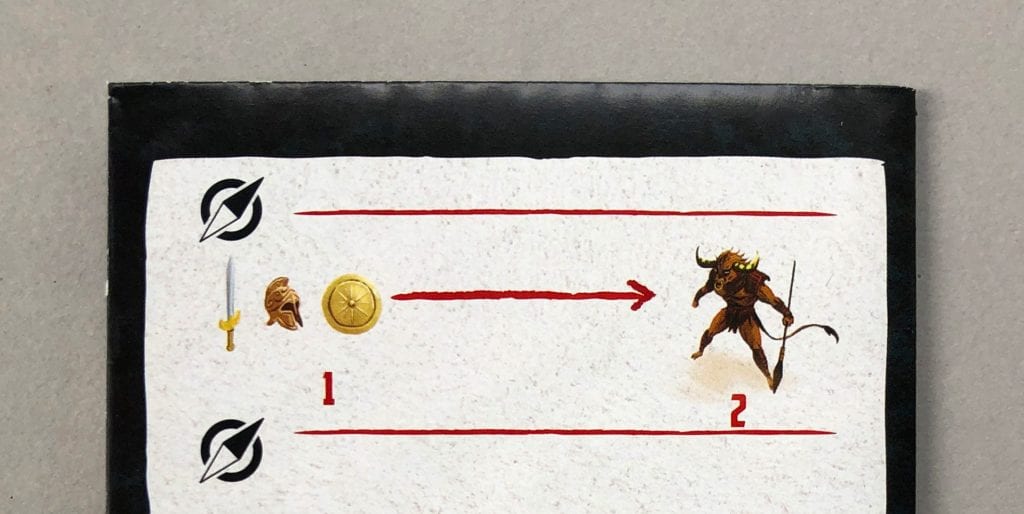
Production
Each Mazescape box opens much like a locked book, thanks to magnets on the overhanging right edge. It’s a very nice bit of design that gives opening the boxes an added air of something special.
The artwork is consistent across the two Mazescape sets. Both use the Greek legend of the Minotaur as a starting point, although Labyrinthos tends more towards Halloween-ish ghouls. (Nothing is too gruesome or frightening; this is something I’d easily hand over to kids in that regard.)
The paper used for the maps is a somewhat glossier version of what you’d expect to see in a paper road map. (Wait—do they still make paper road maps any more?) I found myself taking extra care while working on some of the more complex maps. With the amount of folding and refolding, I could see some of the inner page edges wanting to tear. Kids (and adults) will need to take care when working through the folds of the mazes.
All seven maps fit nicely in their respective Mazescape boxes, along with an instruction booklet. (Mine came with instructions in six different languages.) It’s a handsome package that would look at home on any bookshelf.
Final Thoughts
Remember that problem I mentioned with this review in the introduction? It has to do with an important word missing in this review: game.
I struggled with the idea of mazes being games on my own for a while, then I took it to my fellow Meeple Mountaineers to get their thoughts. They agreed with me—mazes aren’t really games. As my friend and fellow Meeple Moutaineer David McMillan put it, “They’re an activity. Unless there’s a way to lose, it’s not a game.”
But, just because they aren’t games, doesn’t mean they’re not worth your time. Therefore, the better question, I believe, is: “Are they fun?”
And to that, I offer you a resounding yes. Mazescape Labyrinthos and Mazescape Ariadne were both engaging puzzles. I spent full afternoons wandering through folds and refolds, frequently forgetting how I got to where I was in the maze and getting stuck.
Not only did I get lost in the mazes themselves, but I got lost in the imaginative engineering designers Pablo Céspedes and Víctor Hugo Cisternas put into them. There were moments in more than one Mazescape map when I was convinced I knew how to fold the paper to get to another area on the map. Instead, I met with another abrupt dead end. I felt they had anticipated my thinking and were only too happy to show me that they’d already taken my misguided thoughts into consideration.
If you’re a fan of mazes or clever, complex designs, Mazescape Labyrinthos and Mazescape Ariadne will provide you with hours of confounding entertainment.


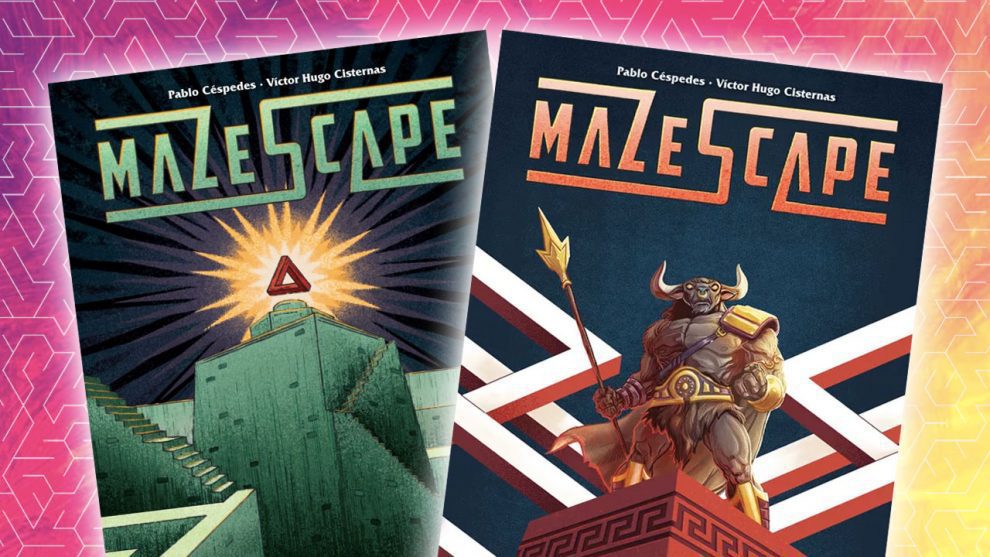








Add Comment